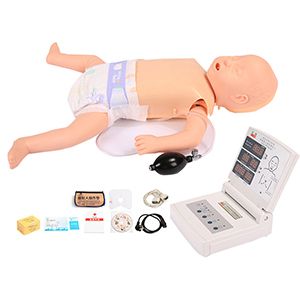
In the first aid training, simulating the real situation is an important link to improve the students' actual combat ability. For medical students, equipment that can accurately simulate complex first aid scenarios, especially in neonatal cardiopulmonary resuscitation (CPR) training, is crucial. Neonatal cardiopulmonary resuscitation involves specific operational skills and judgment, and any deviation may affect the first-aid effect. Therefore, simulators with high degree of simulation can effectively improve students' judgment and operational accuracy in emergency situations.
1. Precise simulation function to improve the training effect
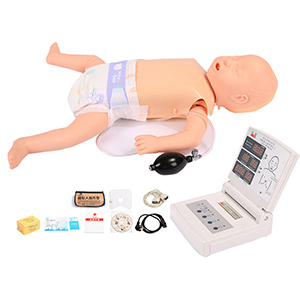
Neonatal cardiopulmonary resuscitation Simulators
Neonatal cardiopulmonary resuscitation simulators usually have adjustable physiological parameters, such as heart rate, respiratory rate, blood oxygen saturation, etc., which can simulate the physiological changes of newborns in critical situations such as cardiac arrest and asphyxia. Through this highly simulated simulation, students are able to operate in a near-real environment, developing their reflexes and clinical decision-making skills. This simulation training, especially in the application of neonatal first aid, can help students familiarize themselves with common emergencies, such as airway infarction, asphyxia, cardiac arrest, etc., and gradually improve their ability to deal with complex first aid scenarios.
2. A high degree of restoration of the critical procedures of neonatal CPR
Neonatal cardiopulmonary resuscitation simulators usually have various functions required for cardiopulmonary resuscitation, such as simulated artificial respiration, chest compressions, and drug delivery. This simulator can help students master key elements such as the depth, frequency and breathing control of external chest press through different pressure, frequency and strength feedback to ensure the authenticity and effect of training. Especially in high-risk treatment scenarios, operational accuracy often determines success.
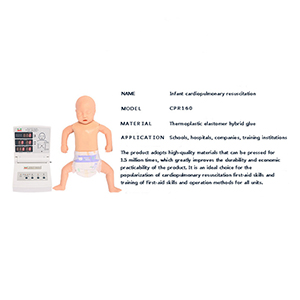
3. Multi-scenario training to enhance coping ability
For different clinical situations, simulators can adjust Settings to simulate complex first aid scenarios. For example, by simulating the cardiac arrest of a newborn due to a congenital defect or accidental injury, simulators can create a variety of environments that allow trainees to experience different first aid pressures during training. This simulated situation not only improved the students' emergency response ability, but also enhanced their ability to multitask in a high-pressure environment.
4. Data support: quantitative evaluation of training effects
With built-in sensors and recording devices, simulators can provide real-time feedback on the student's performance. The data, including depth of pressure, frequency, breathing time, etc., can be used to analyze the accuracy and timeliness of the trainee's operation. This data supports the interaction between trainees and mentors, helps trainees identify their weaknesses, and further improves the level of CPR operations.
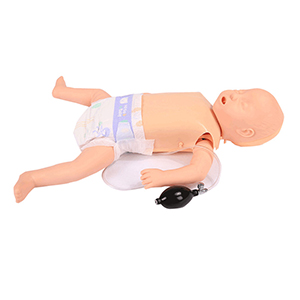
Sum up
Neonatal cardiopulmonary resuscitation simulator, with its high physiological recovery ability, adjustable first aid scene setting and accurate operational feedback, can effectively simulate the complex first aid environment. This not only helps medical students to do a lot of repetitive training in a safer environment, but also improves the precision and decision-making ability of their clinical operations, thus improving their ability to cope in real emergency care.


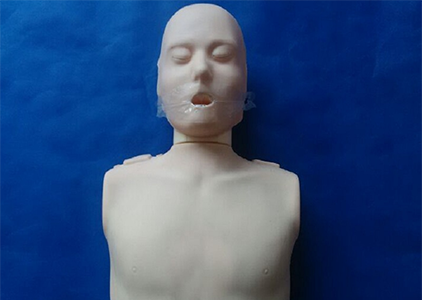




Sophie Asveld
February 14, 2019
Email is a crucial channel in any marketing mix, and never has this been truer than for today’s entrepreneur. Curious what to say.
Sophie Asveld
February 14, 2019
Email is a crucial channel in any marketing mix, and never has this been truer than for today’s entrepreneur. Curious what to say.